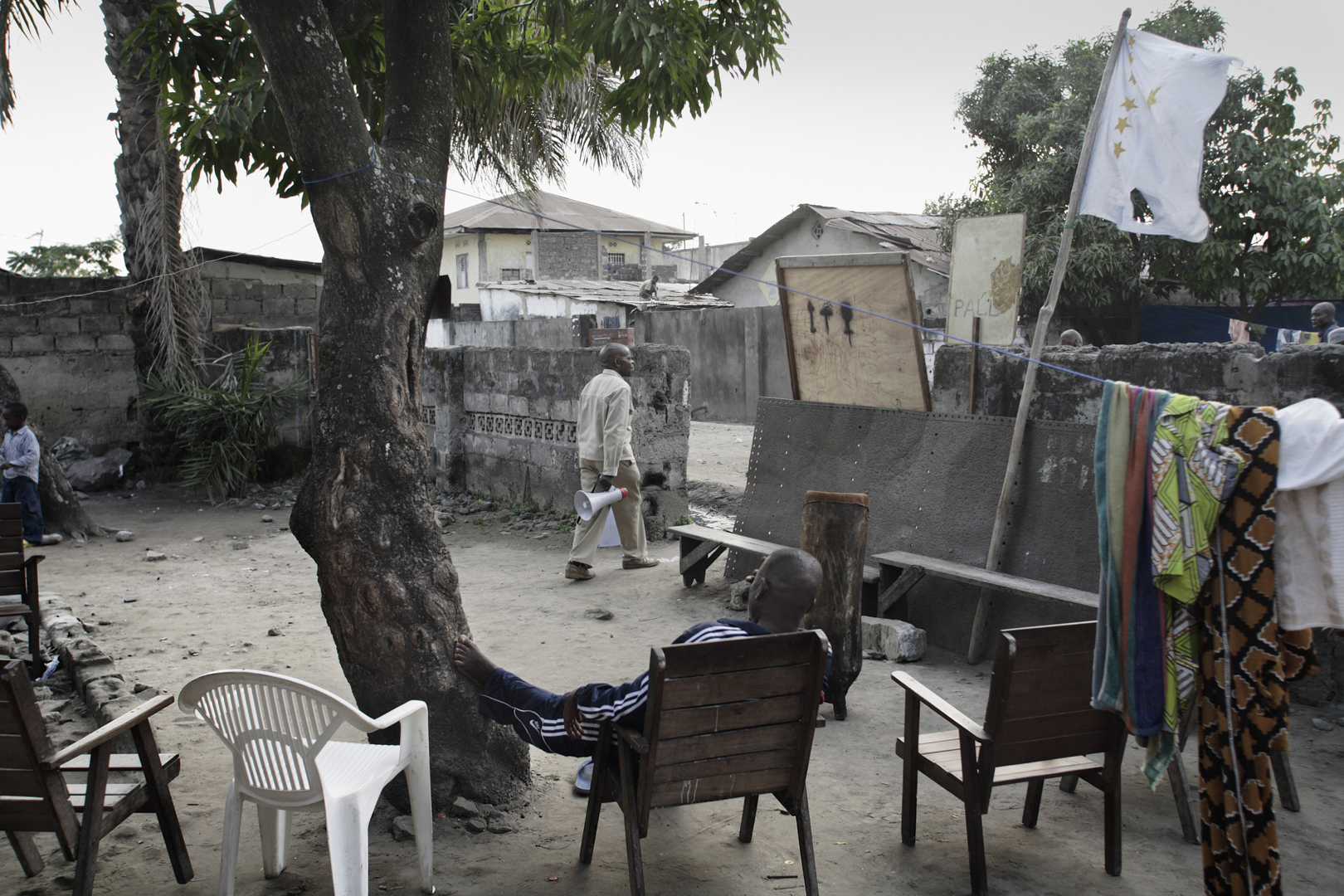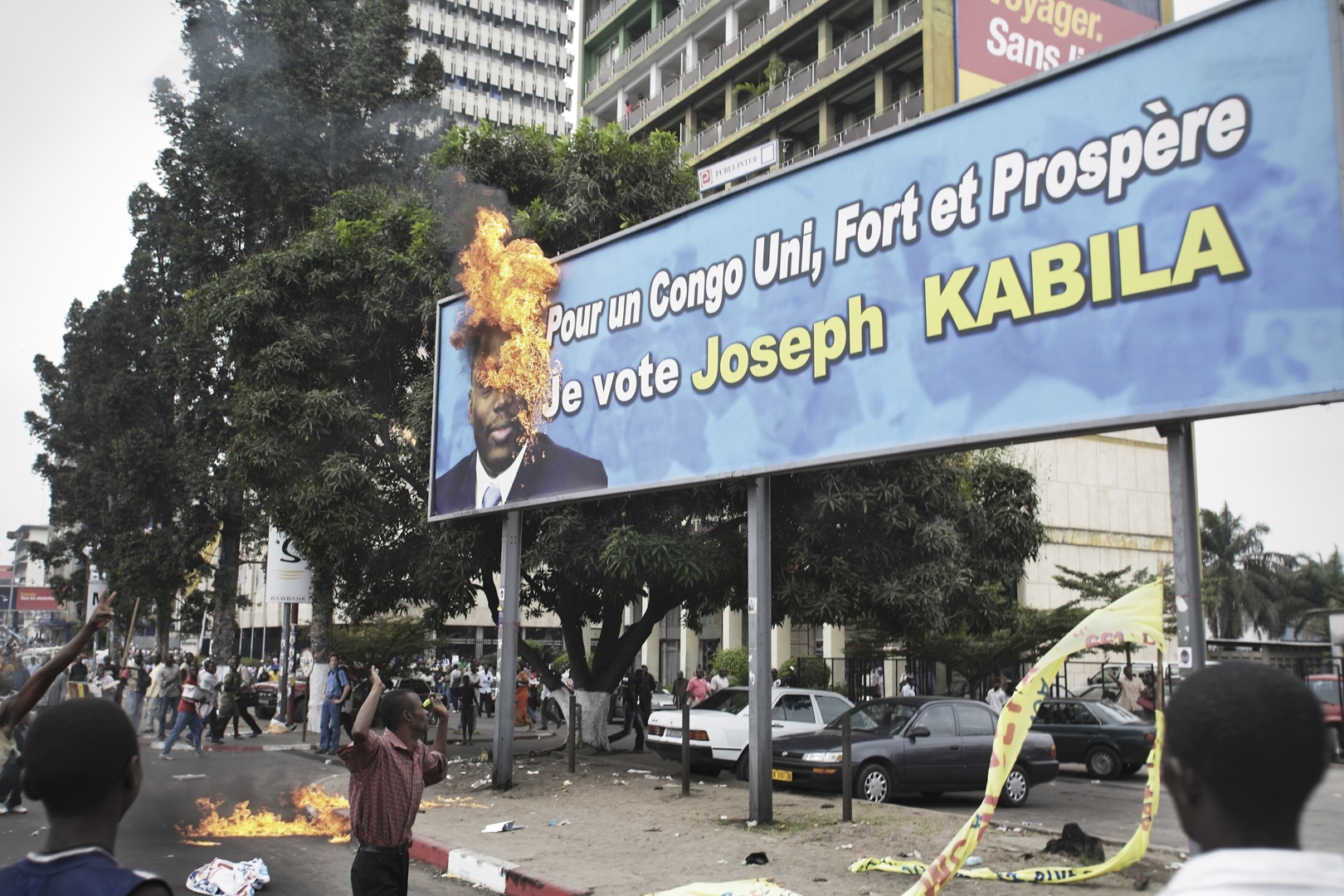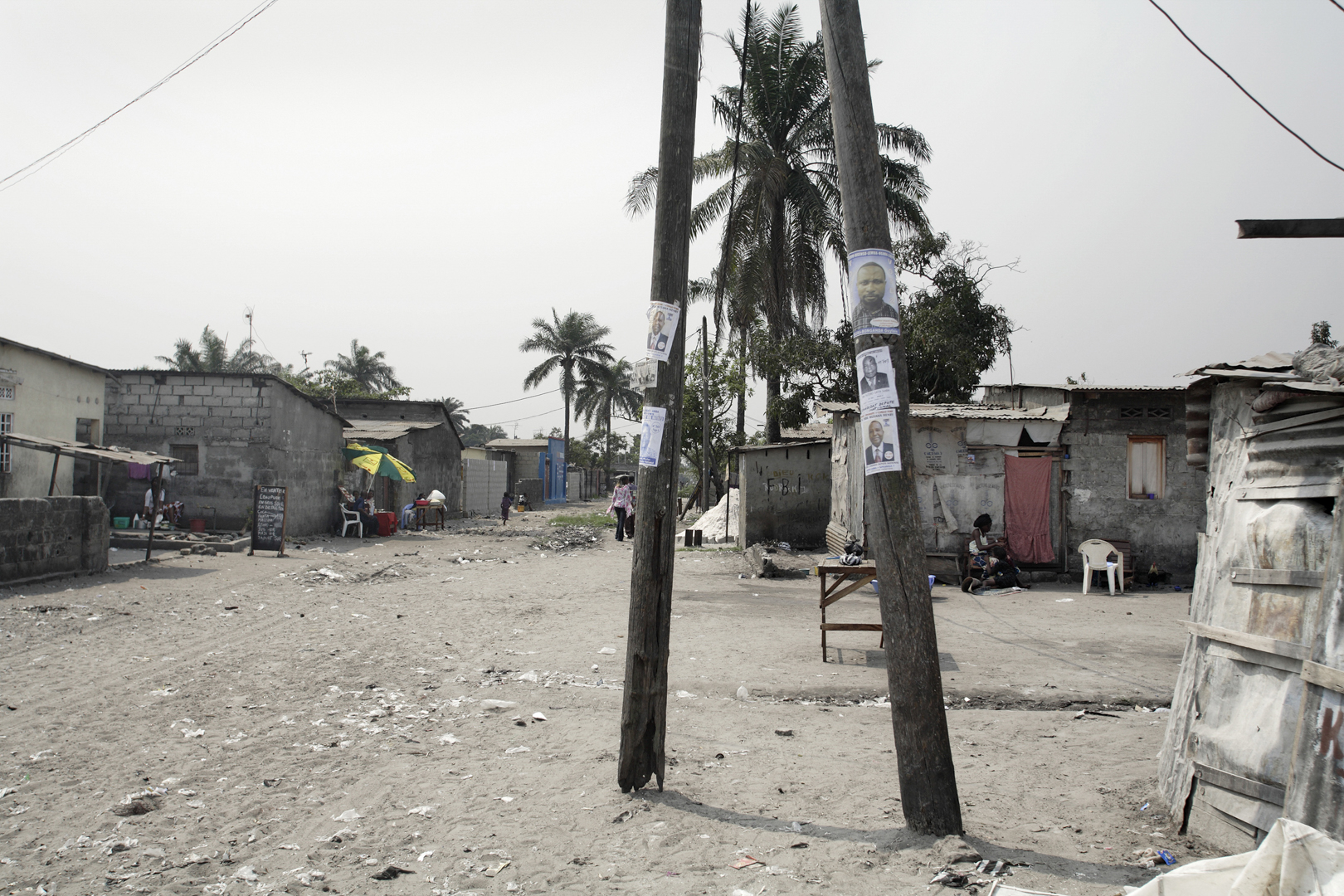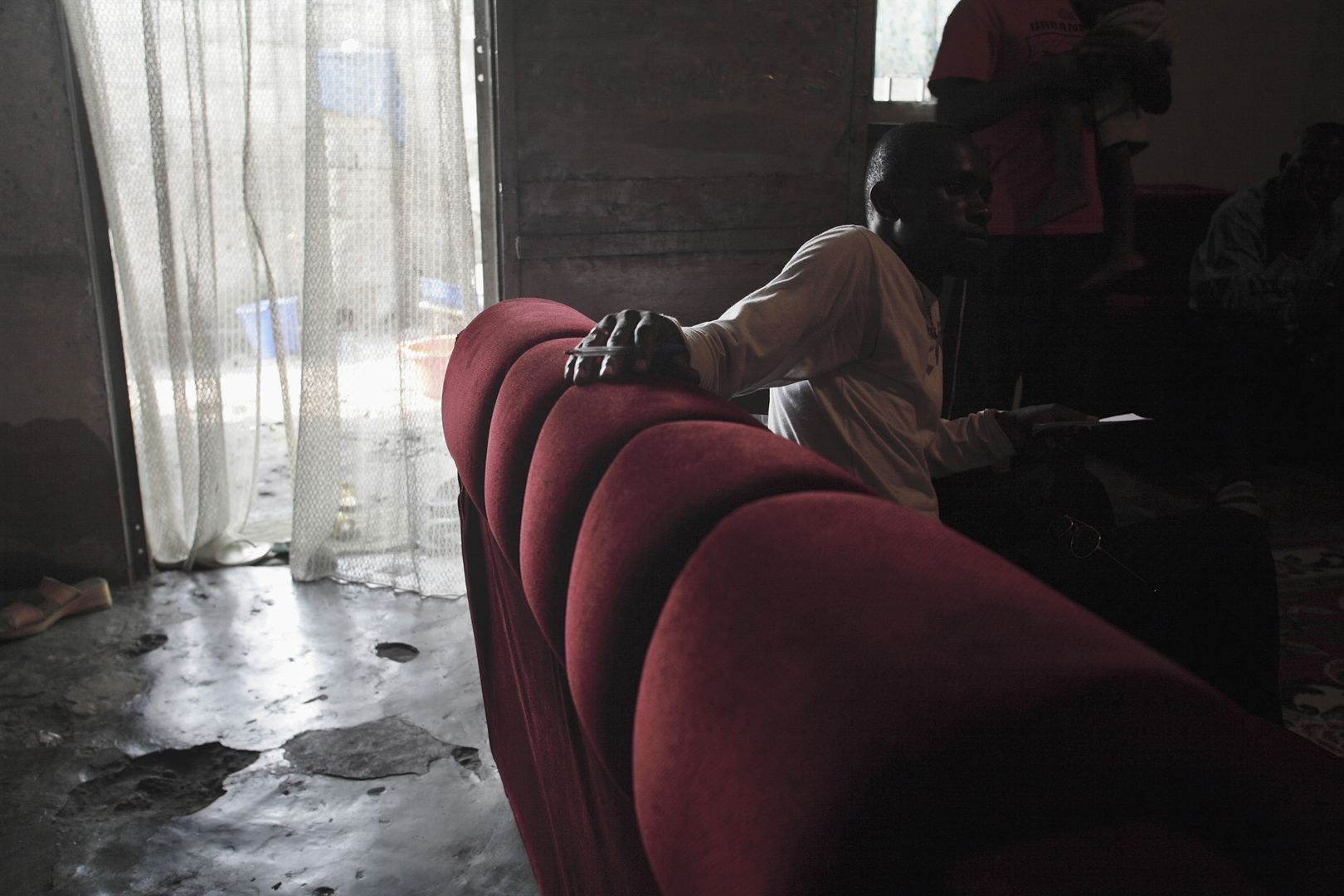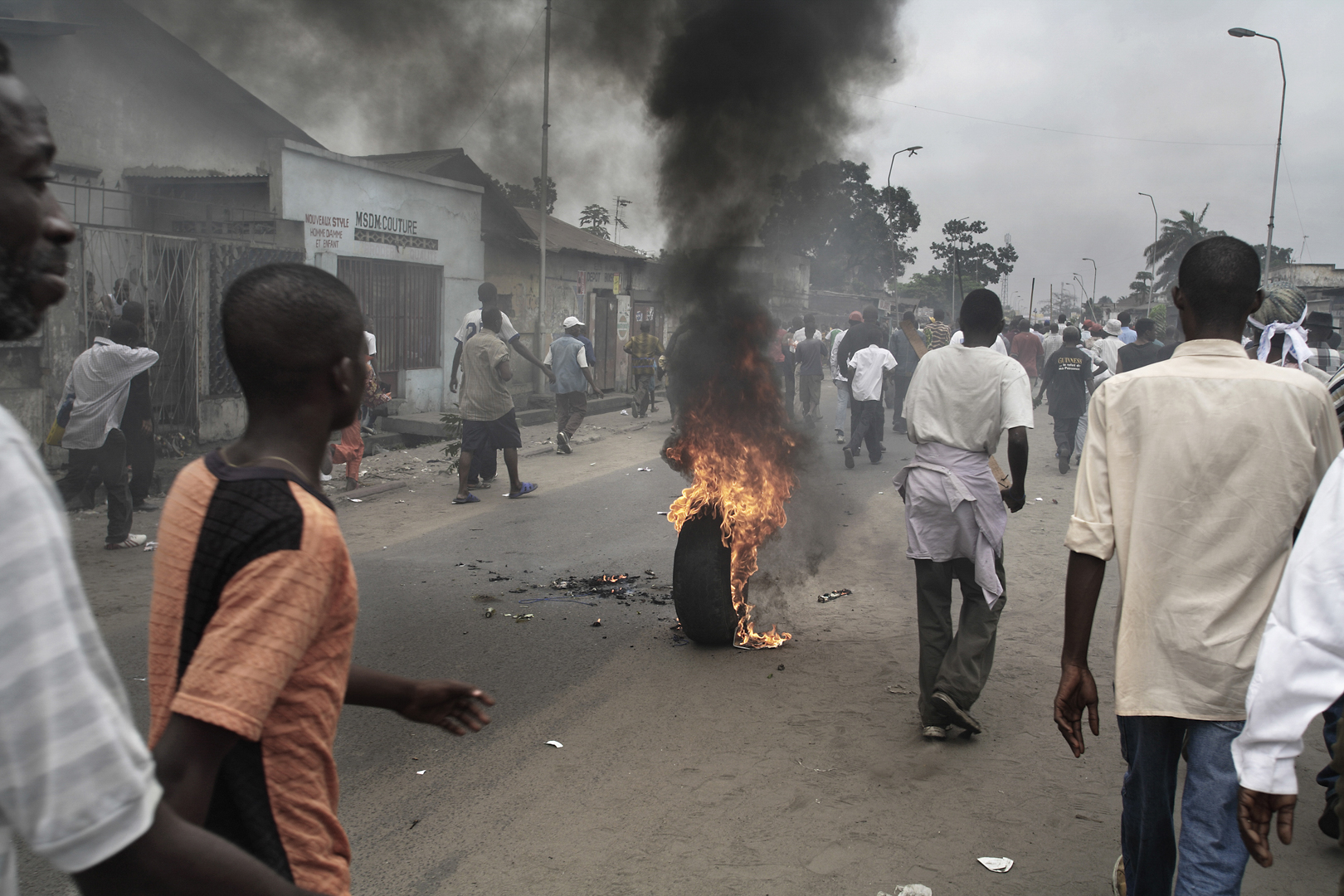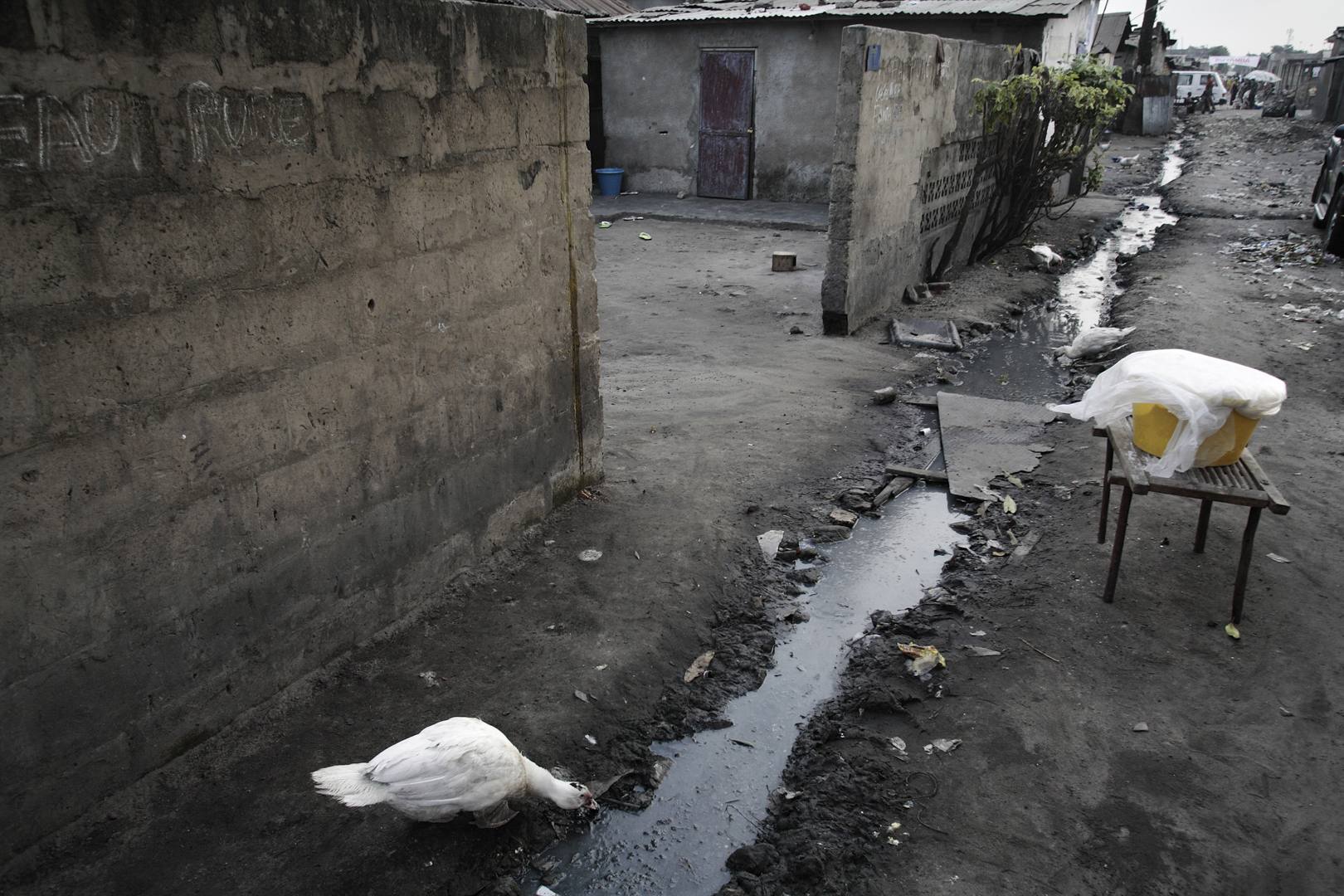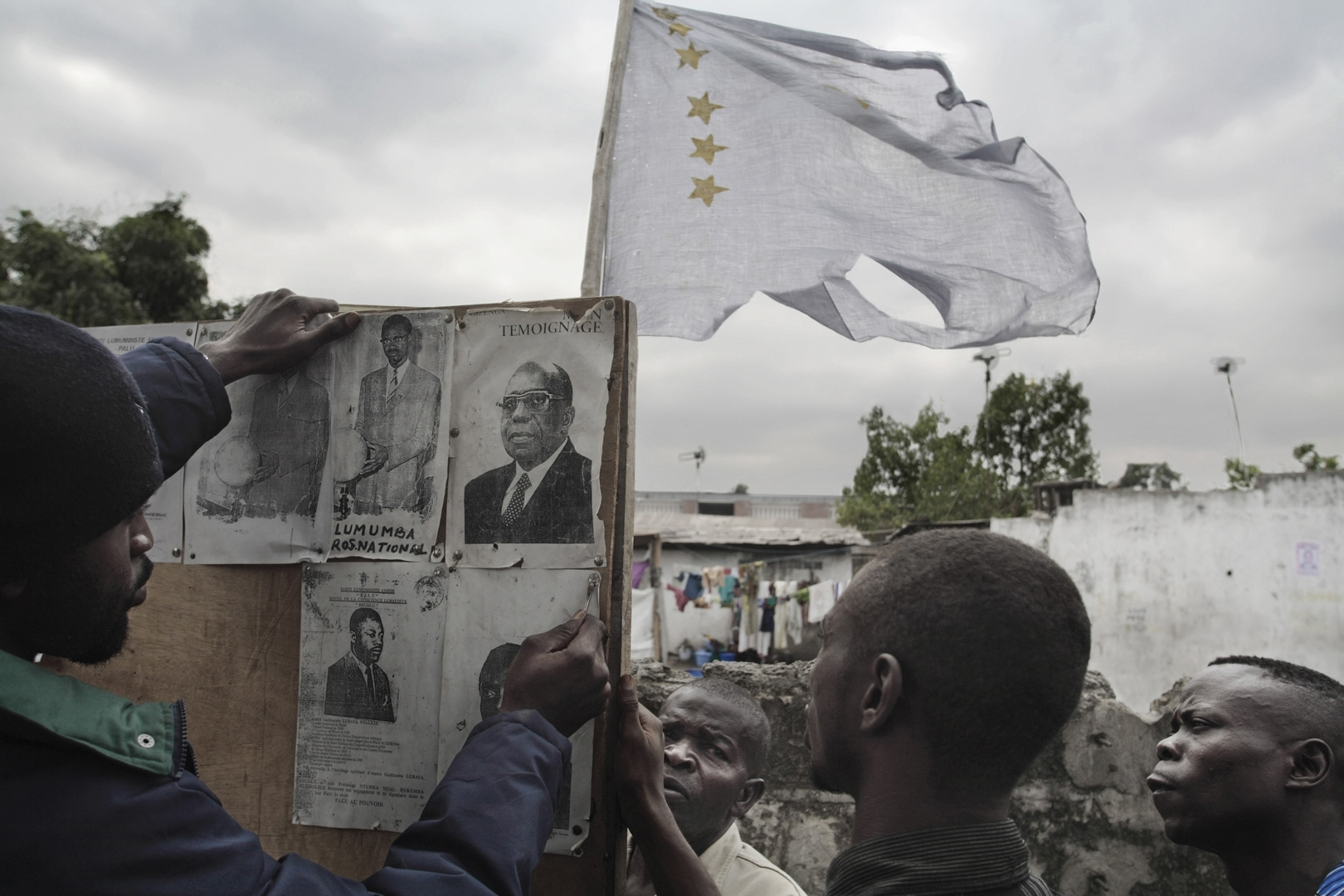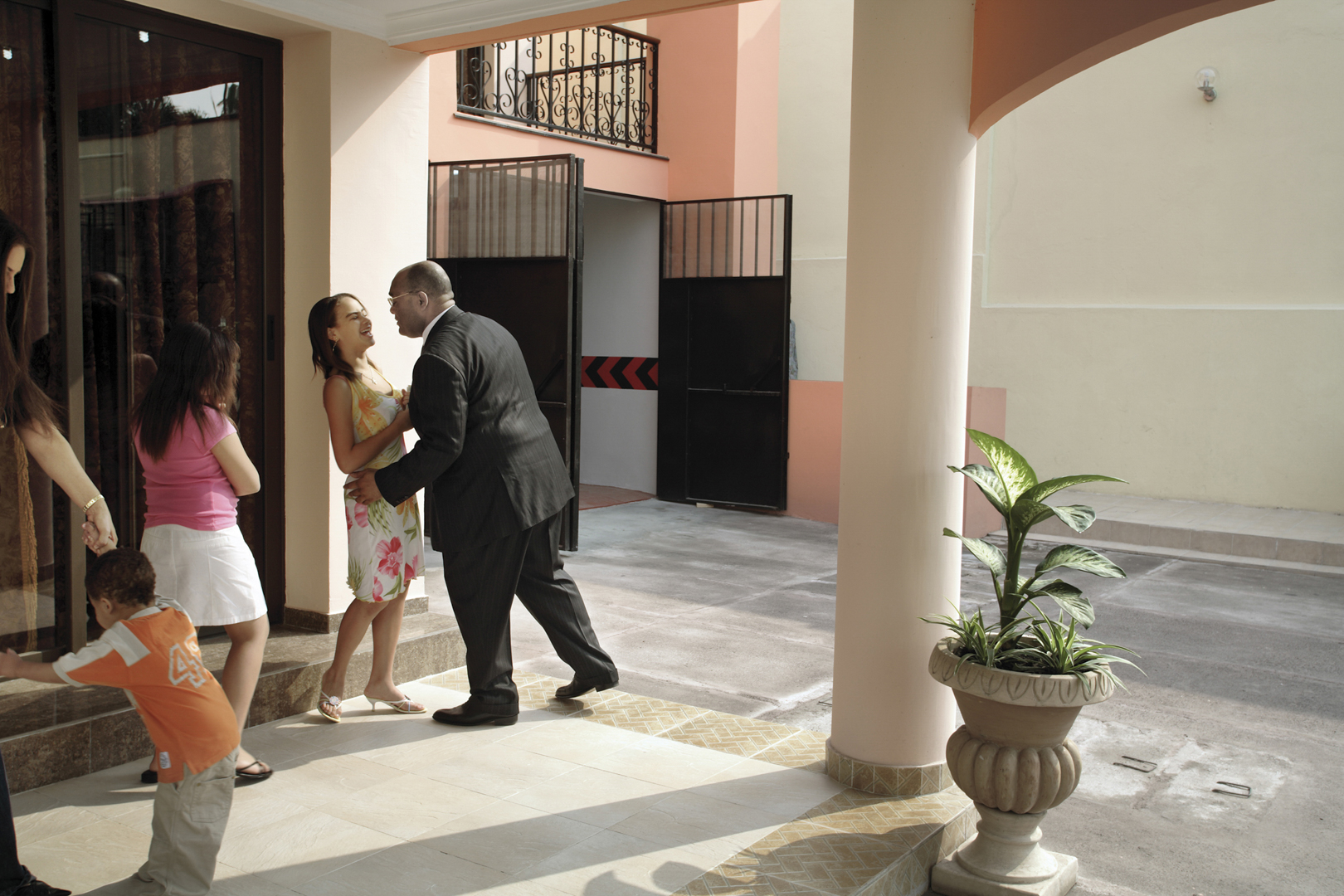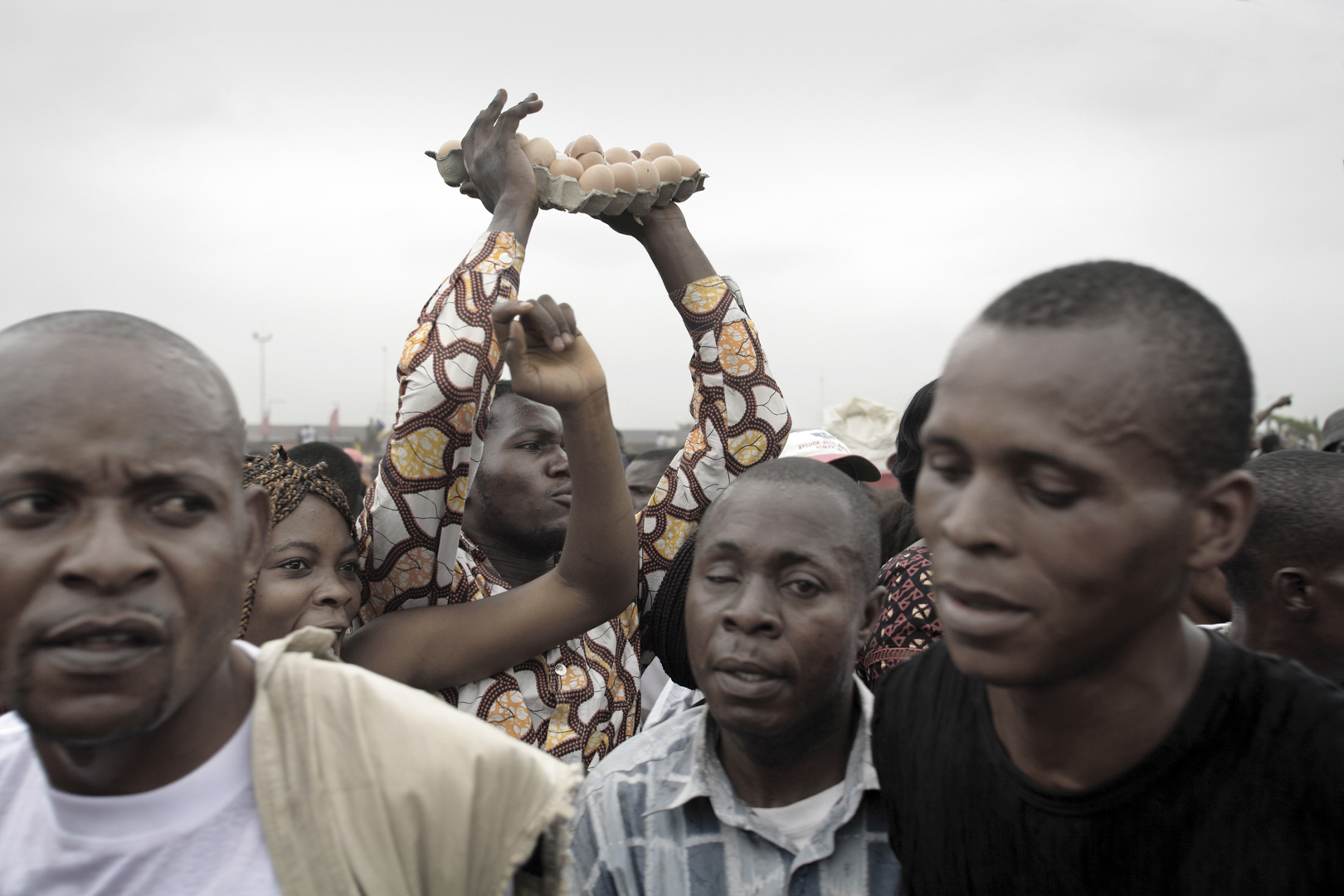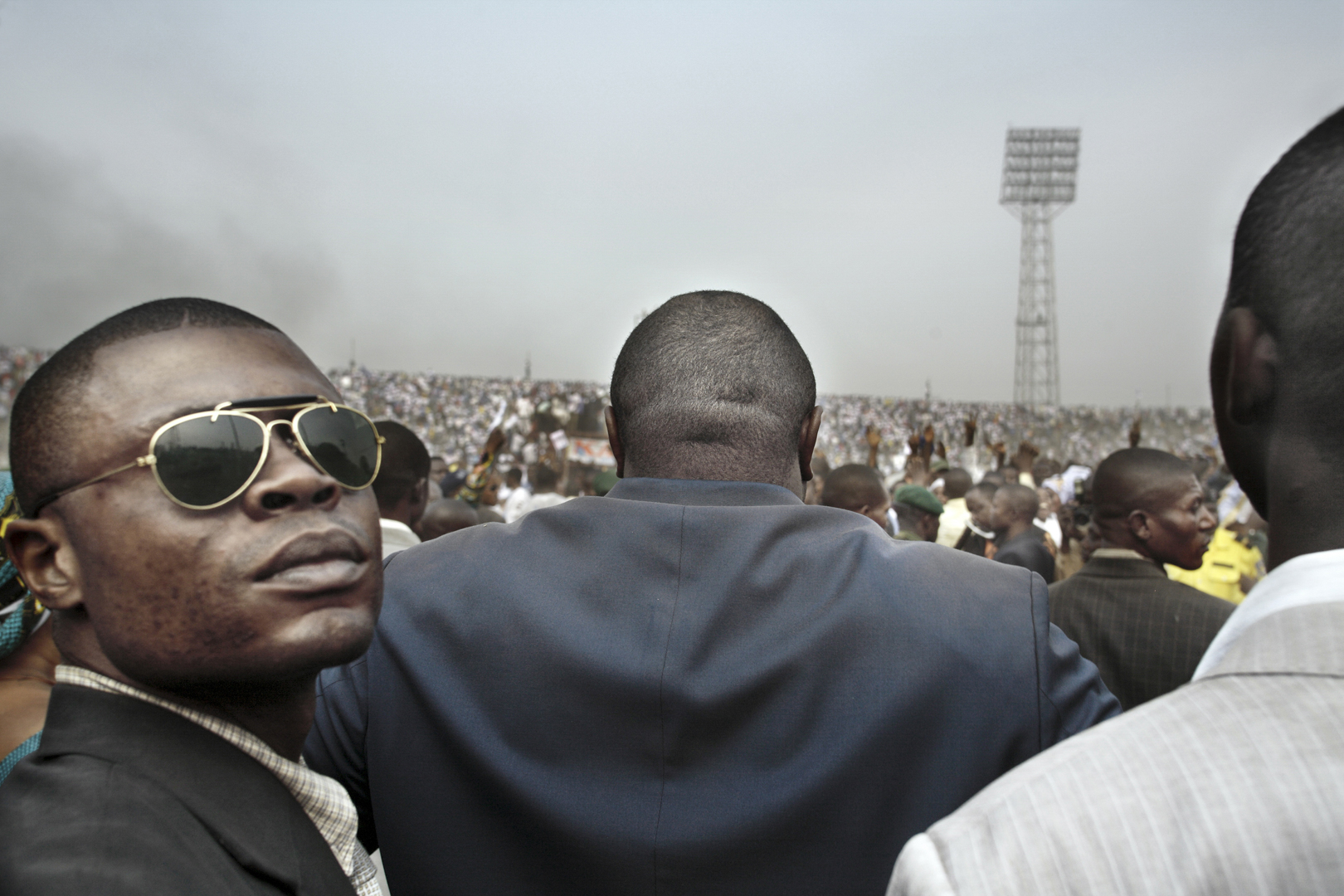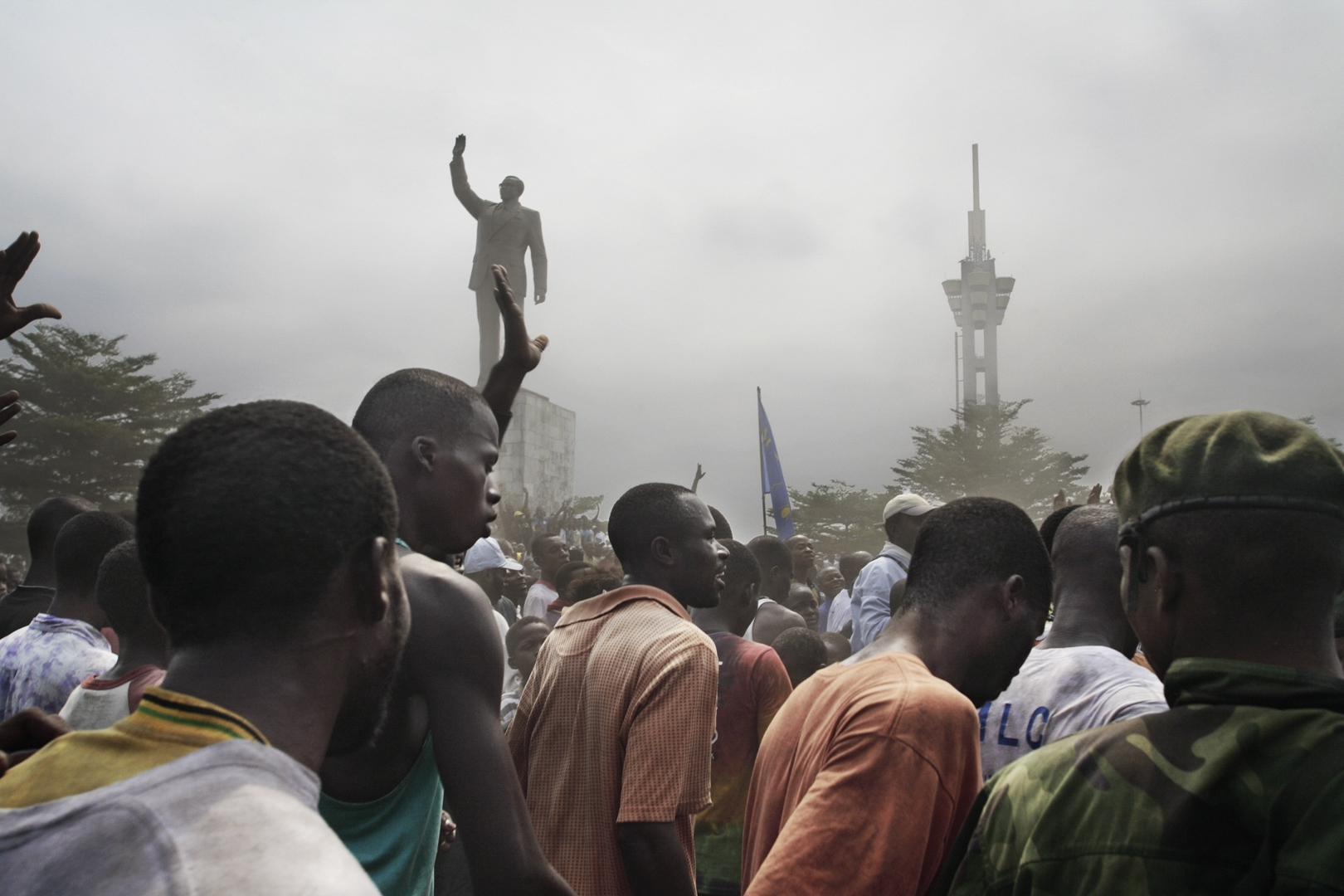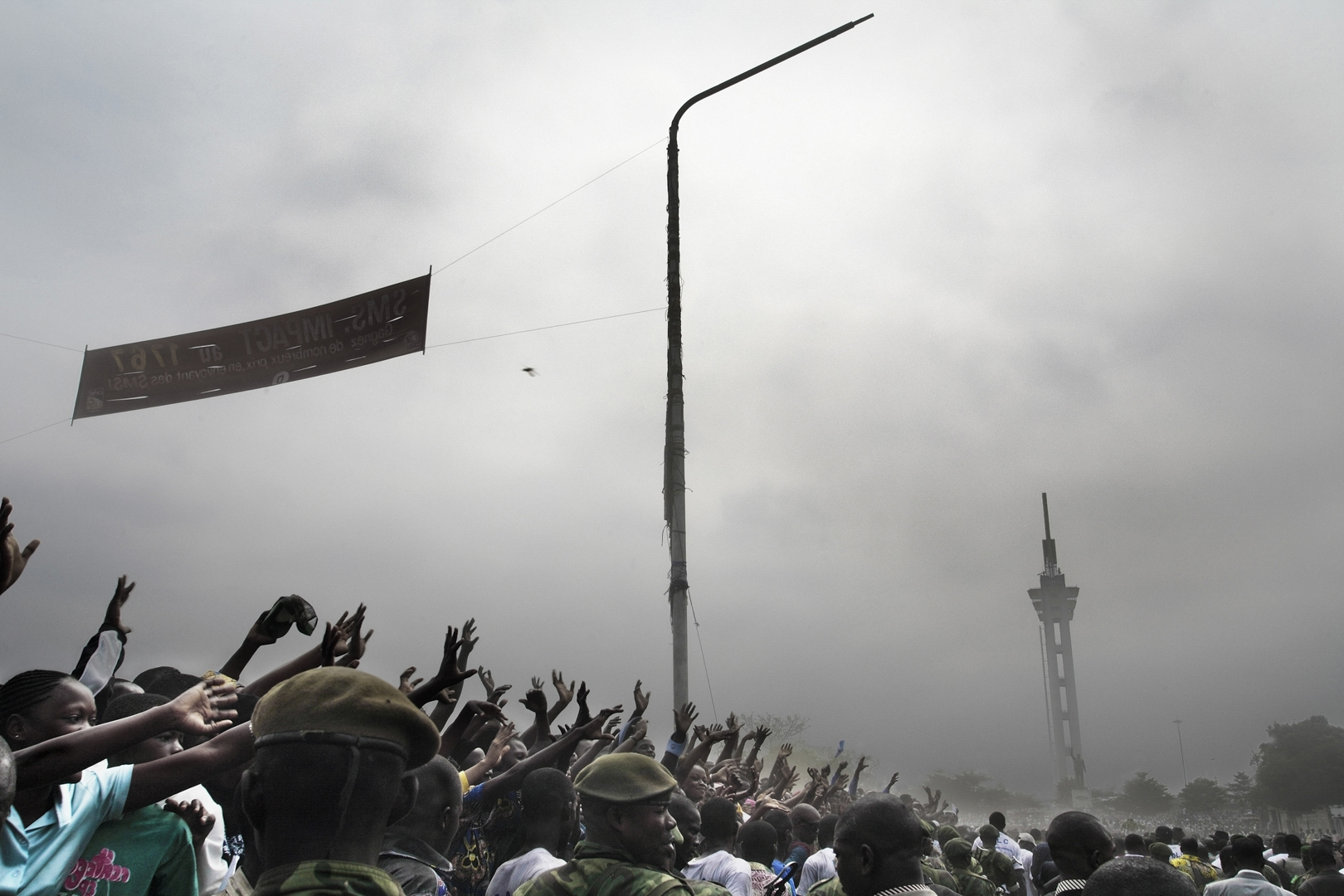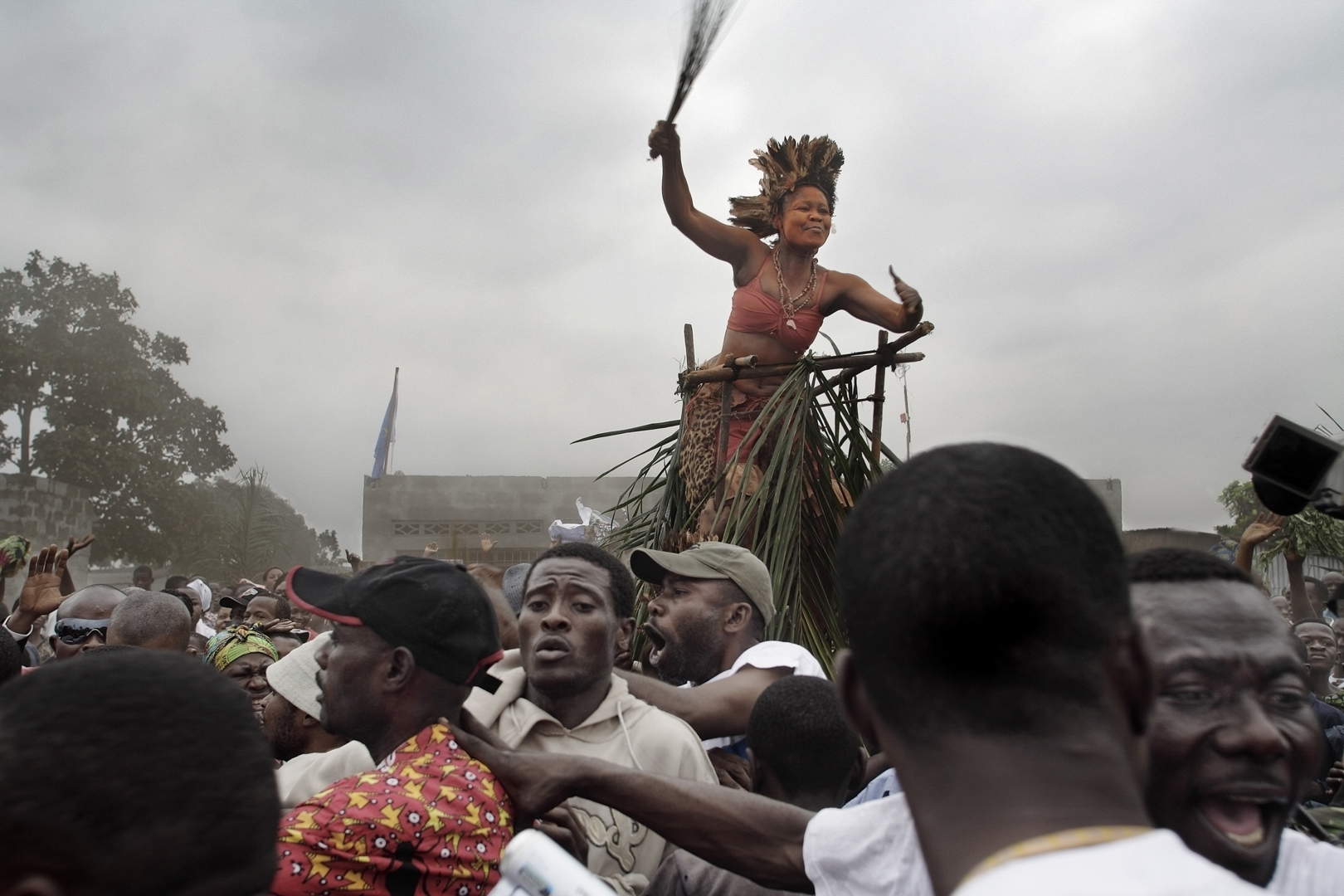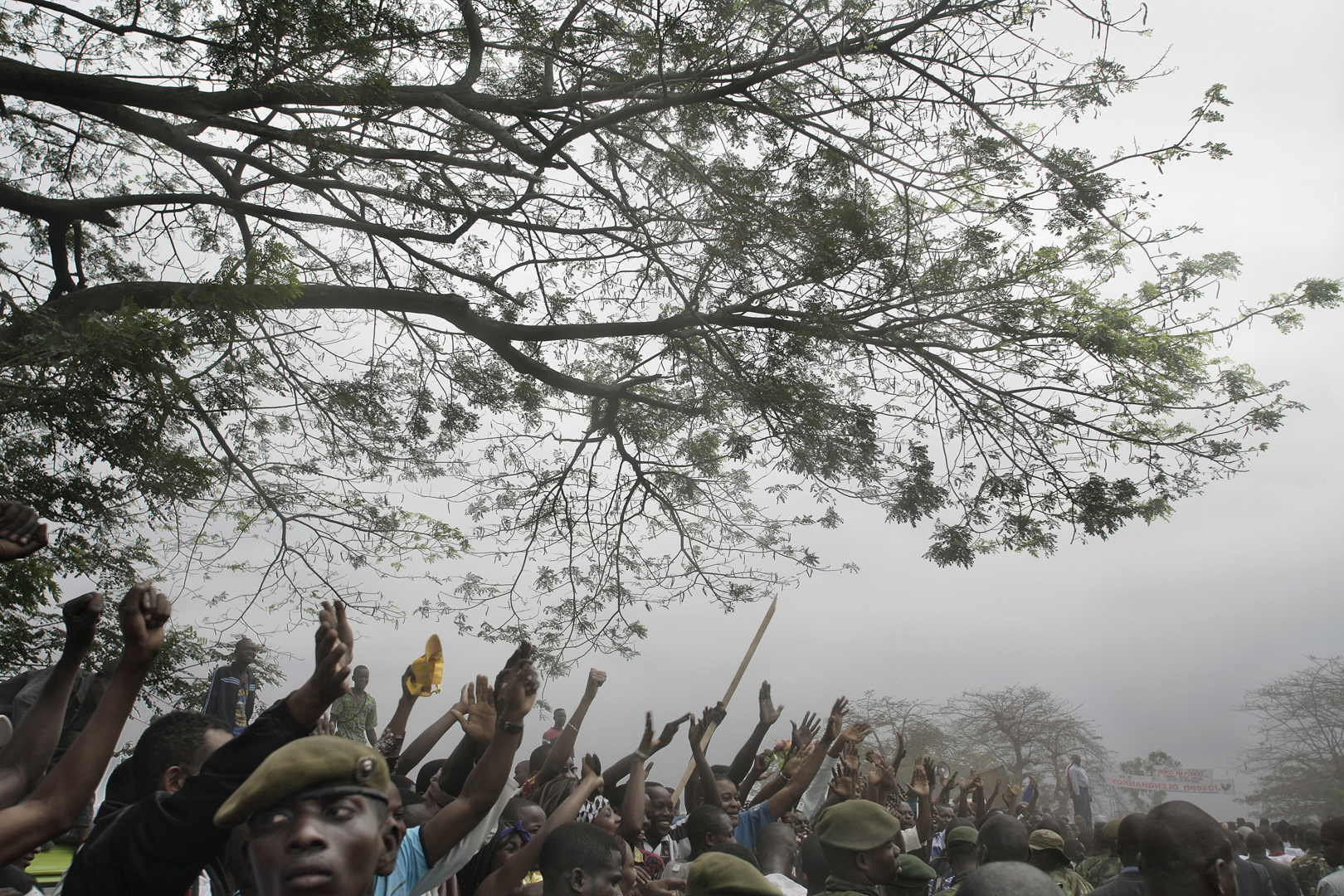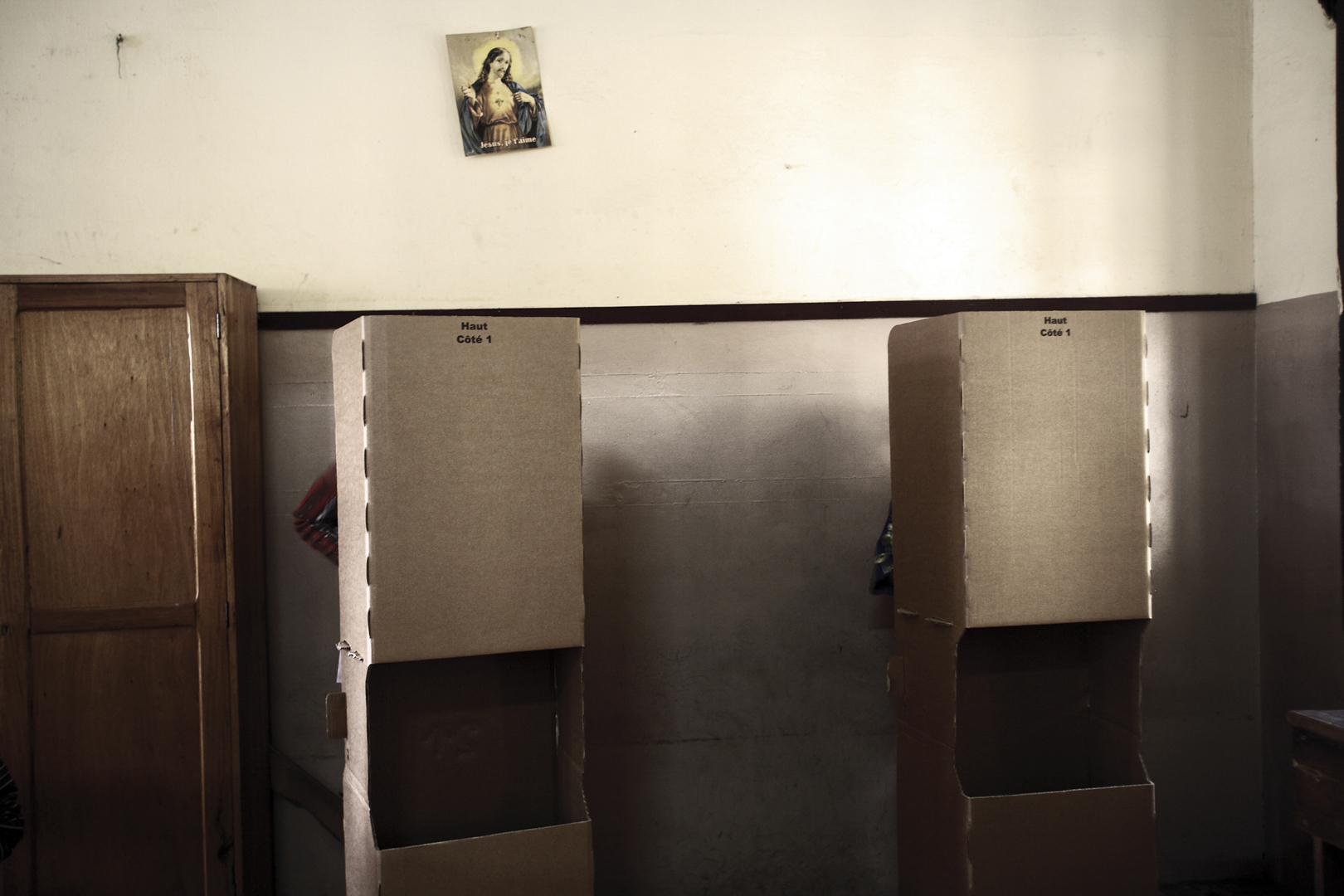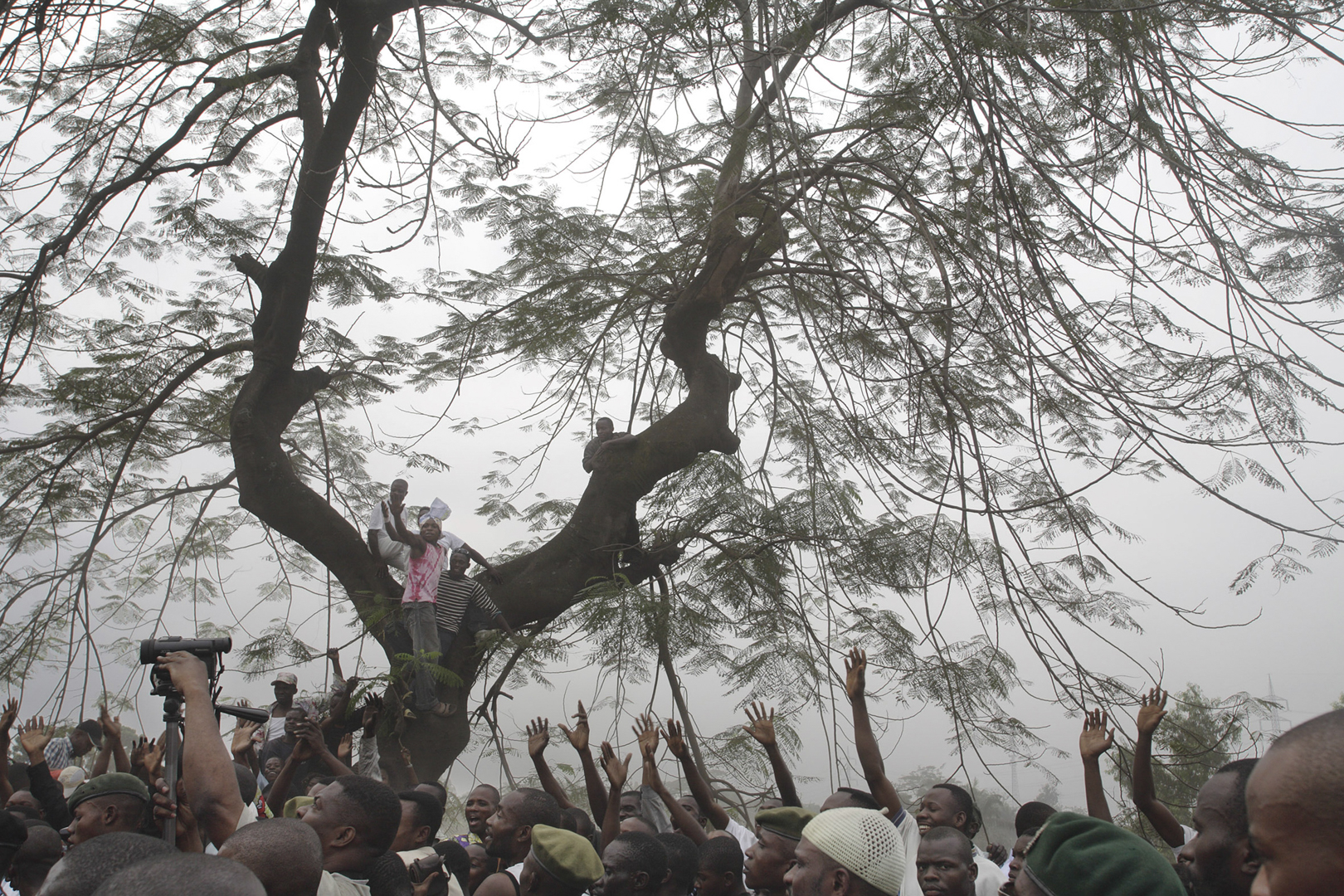Congo Democratic, 2006
Successive wars in the Congo, one beginning in 1996 and the other in 1998, have left the country devastated. After five years of combat, and an estimated 3.5 million mainly civilian deaths, an agreement was reached in 2003 that called for general elections and a new constitution by 2005. In July 2006 some 3 400 candidates came forth to contest the 500 seats in the house of assembly, 800 on the ballot in Kinshasa. There were 33 presidential candidates. The ballot was an amazing six-page poster-size document with pen pictures of all the candidates that were hard to recognise.
The campaign sloganeering and banners did not say “Vote Adam Bombole, Health for All”, for example, but “Vote Adam Bombole, page 3 No. 438”.
Etienne Tshisikedi, a veteran former minister under Mobutu Sese Seko, had called for a boycott of the elections. Young men in Kinshasa fought battles with police in his name as they tore down and burned election paraphernalia, directing special hostility at the visage of President Josef Kabila, who was running as an independent, though listed as an “initiator” of the People’s Party for Reconstruction and Democracy which chose him as their candidate.
I asked a Congolese friend if he had a theory about the large number of candidates.
“Visibility is everything,” he told me. “Get yourself on a list, so when the next thing happens, perhaps a peace agreement where power and influence are divided up, you will be on it somewhere.” Kabila and his main rival, Jean-Pierre Bemba, who have been at war with each other and control separate armies now barracked in Kinshasa, have unofficially divided up these spoils for years.
The Kinshasa streets mirrored the political wasteland and civic disorder that resulted from the war between these two men. But there is a good chance that $450 million, spent mostly by the European Union on the election, will transform this rivalry into a constitutional debate.

